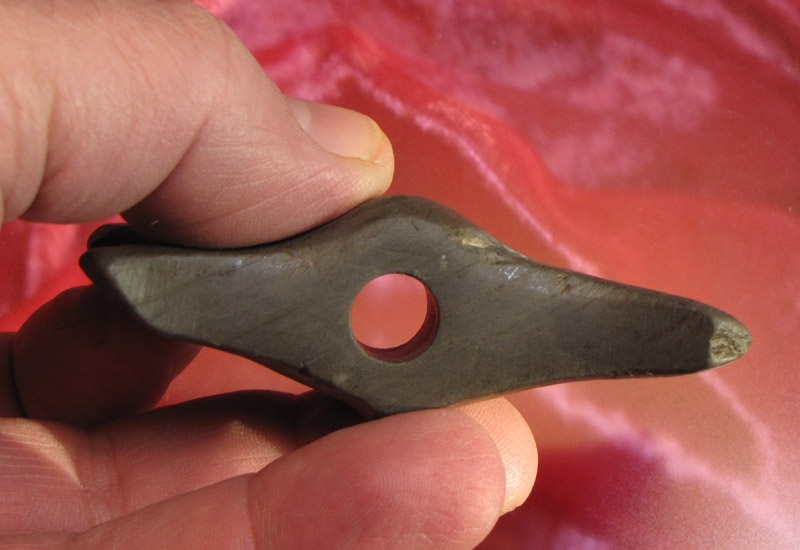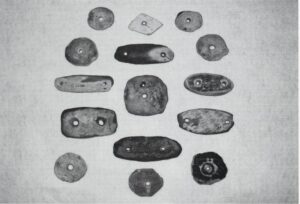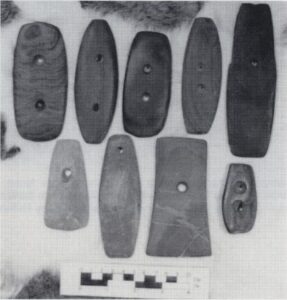by: Charlie Wagers, Fairfield, Ohio
This issue of Prehistoric American is dedicated to the bannerstone, a prehistoric artform which captures the imagination and love of most all artifact collectors. The bannerstone probably comes in a wider variety of forms and materials than any other prehistoric artifact type. They are found made from the most beautiful quartz to the most drab sandstone. Their from aries from their highly-developed double crescent to examples that are little more that a drilled pebble. From the number of salvaged examples and reworked froms, they were undoubtedly highly regarded by their owners.
Speculation has bounced around for years on what was their actual use. Moore was convinced that the examples found along the Green River in Kentucky were net spacers and that the hooks often found with them were hooks used in the manufacture of nets. Dr. W. S. Webb spoofed at this theory claiming they were spear thrower or atal atal weights. He based his theories upon excavations at Indian Knoll in Ohio County, Kentucky. It is interesting to note here that there was an example found at Indian Knoll which was a beautiful quartz saddle form on a necklace of shell beads. In this issue, Bill Koup and David Lutz present their thoughts and studies on the subject.
The writer speculates that the term “bannerstone” is applied to a form which had a variety of purposes and uses. There is little question in my mind that some were used for atal weights. It seems curious that so much effort would be placed into a beautiful quartz banner to use it on a tool as utilitarian as a spear thrower. It also seems curious that beautiful quartz examples are found which show no use and seem to have been made to be buried, yet have the same form and are found on the same sites as those associated with spear throwers. Likewise, this writer cannot believe that the highly developed slate forms like the double crescents, notched ovates, reels, and butterflies would have been used as a spear thrower weight. Further, I know of no situation in which these forms have been found with a hook or other association suggesting an atal atal weight. It is more probable that these forms were mounted for use as a sceptre or symbol of position.
Article used with permission by Bill Koup





